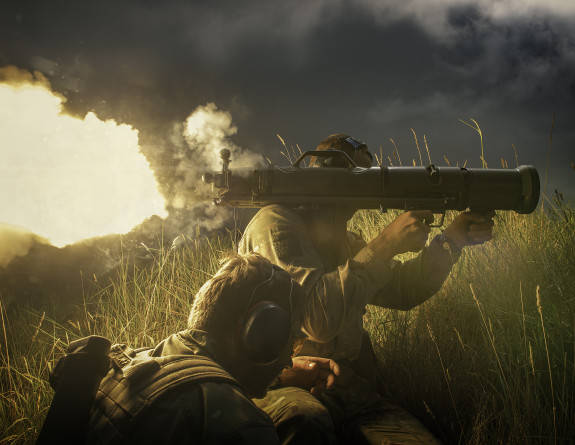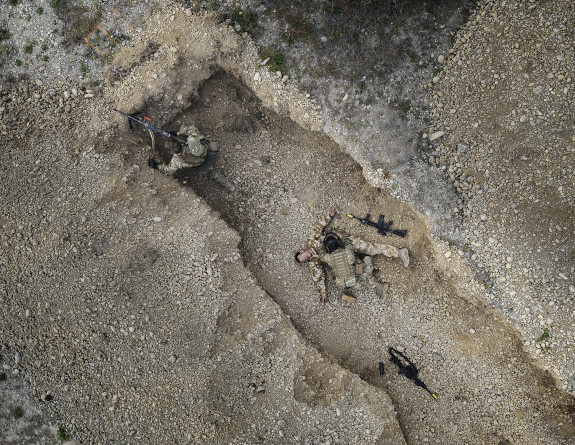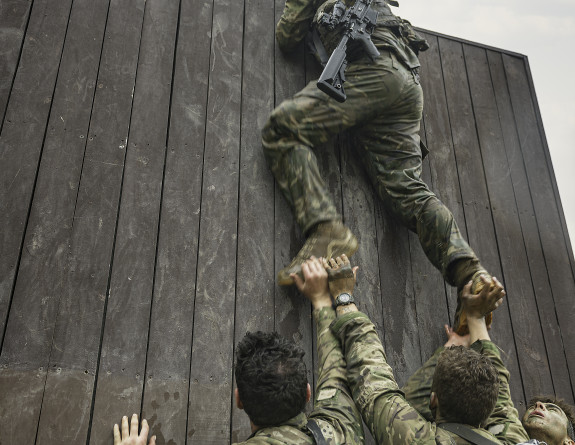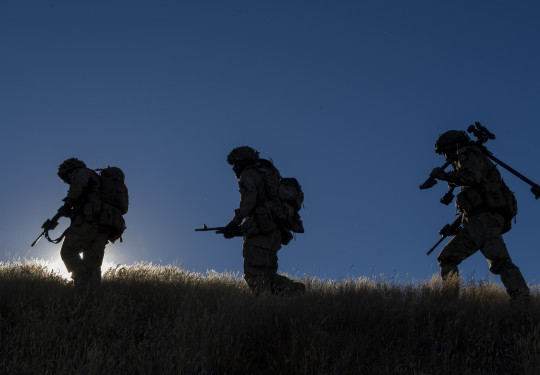New Zealand Army: 12 moments from 2021
Our Army’s commitment to Op Protect has been significant throughout 2021, and has resulted in a reduced level of training and opportunities for our soldiers.
28 December, 2021
At any one time a large part of our force has been supporting the Managed Isolation and Quarantine facilities by providing security and management support. We are proud of the role we have had, and our people have done everything asked of them, and then some, with respect to our nation’s COVID response. But that’s not all our Army has done this year.
In-between rotations our people have still managed to deliver a wide range of outputs for the government, and fitted in some outstanding training. Here are 12 memorable moments from our year.
Always ready: the HRTU trains with enablers
The first Air Mobile course of 2021 had 1RNZIR personnel alongside the High Readiness Task Unit enablers from 2ER, 16 FD REGT and MI COY. The course progressed from ground training in the NH90 helicopter mock-up focussing on drills within the aircraft, to refining roping techniques on the Linton Helo Descent Tower. It culminated in two days of live fast roping descents from 3 SQN NH90s which also allowed the helo load masters to qualify in dispatching fast ropers. The course conducted qualifying descents from 40 Ft before increasing the height to ranges of 60 to 80 Ft in order to gain confidence at height.
The course strengthened relationships and enabled those taking part to conduct infiltration techniques by helo.
A spokesman said the crawl, walk, and run approach to learning accelerated students’ confidence leading into the live descents.
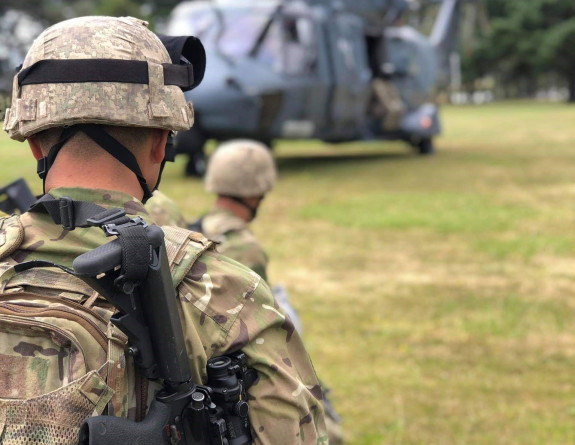
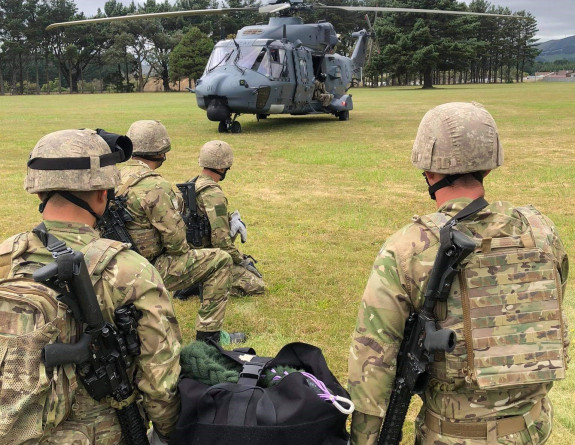
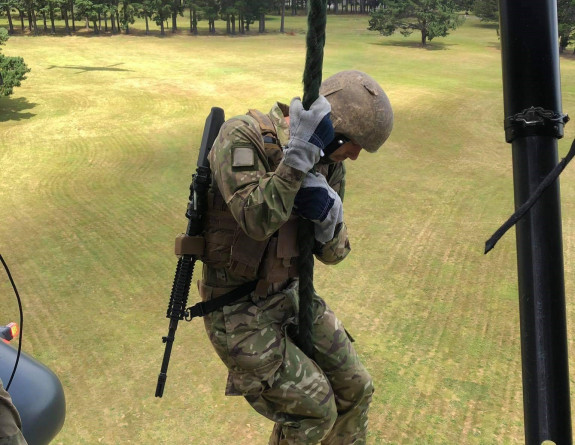
Remembering the fallen — on both sides
Ruapekapeka is one of our most precious and significant sites and bears the traces of a dark and difficult chapter in the history of Aotearoa, the Governor General, Dame Patsy Reddy told those gathered for the commemorations at the Bay of Islands pa.
The commemorations on 3 February were attended by dignitaries from throughout New Zealand, as well as NZDF personnel, and marked the 175th anniversary of the Battle at Te Ruapekapeka.
The theme of the commemoration was Kawea a Pūriri mai – in reverence, remembrance and respect.
The memorial to the twelve British soldiers, sailors and Royal Marines who died in the battle was unveiled as a lasting symbol of remembrance, courage, determination and sacrifice for all those who fought.
Their resting place was rediscovered in 2017 following years of investigation and excavation of the site. Among the find was a clay pipe, as well as items of uniform and personal equipment. All these items were left exactly where they were found when the gravesite was re-closed.
The battle itself saw a force of 1,700 British troops, Royal Navy sailors, and Māori warriors allied to the Crown, fight 500 Ngāpuhi and Ngāti Hine warriors in the last battle of the Northern War of 1845-1846.
The unveiling of the memorial allowed the opportunity for those who attended to remember and honour the courage, determination and sacrifice for all those who fought on both sides at Te Ruapekapeka.
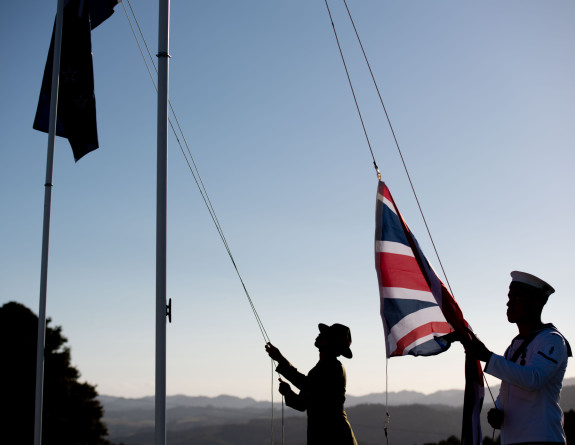
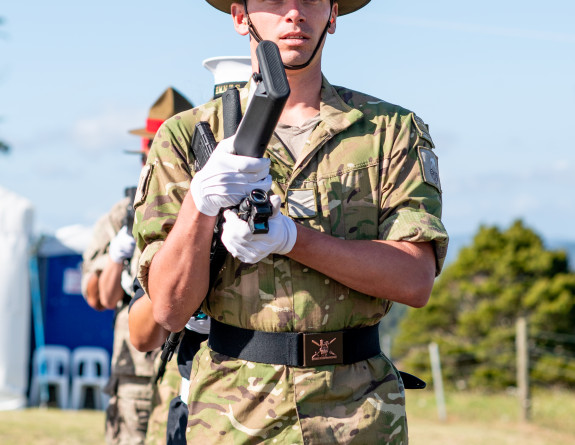
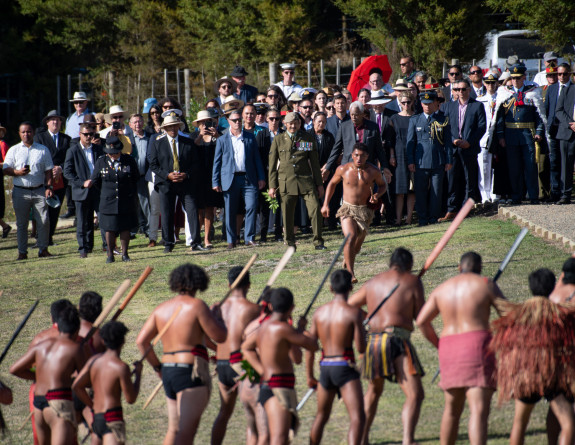
Afghanistan - a 20-year involvement
The New Zealand Defence Force’s 20-year involvement in Afghanistan finished in March.
The New Zealand Government announced that the deployment should conclude this year.
Since 2001 the NZDF has worked alongside partners in Afghanistan, making a significant contribution to regional security and the lives of the people of Afghanistan.
More than 3500 NZDF personnel have served in Afghanistan. Ten Army officers and soldiers lost their lives serving there.
The Chief of Army, Major General John Boswell said the NZDF had made a significant contribution to regional security and development in Afghanistan over the past 20 years, including in Bamyan province with the New Zealand Provincial Reconstruction Team.
NZDF personnel have supported the NATO-led mentoring for the Afghan National Army Officer Academy (ANAOA) and worked at the NATO Resolute Support Mission headquarters.
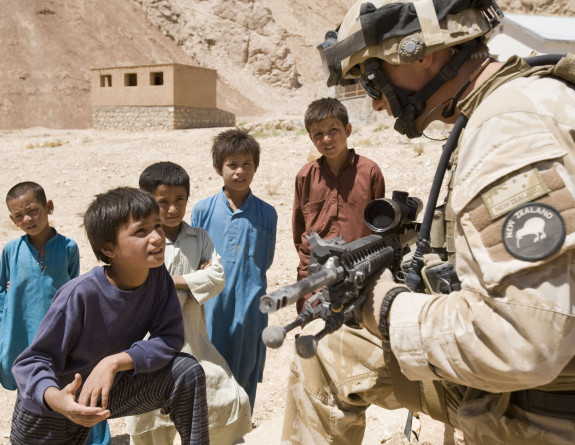
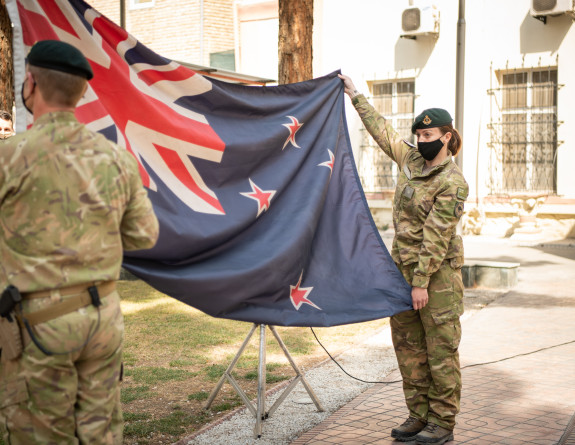
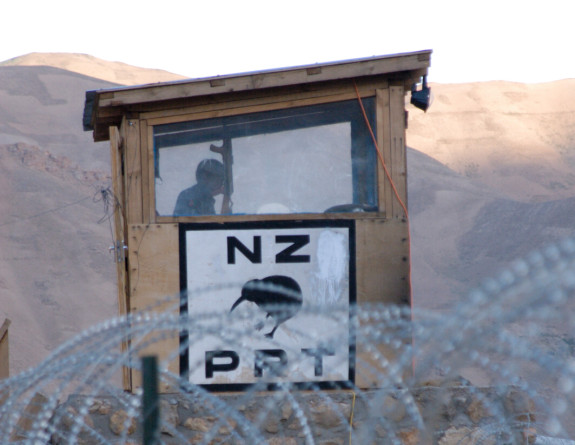
175 years of service
The Pukeahu National War Memorial Park in Wellington was the setting when the Army celebrated 175 years of service to New Zealand in March.
The celebration was conveyed through words, music and waiata and was attended by the Governor-General of New Zealand, Dame Patsy Reddy who is also Commander-in-Chief of the New Zealand Army.
“From the voluntary militia of early colonial times, through to the highly trained, professional men and women in today’s Army, the oldest branch of our defence force has evolved to reflect the times, as well as New Zealand’s changing relationship with the rest of the world,” said Sir Patsy.
The day began with a dawn wreath-laying at the Tomb of the Unknown Warrior. Wreaths were laid by the Chief of Army, Major General John Boswell, Minister of Defence Peeni Henare, and Parliament kaumatua Kura Moeahu.
Later in the day at the ceremony of Beating Retreat the Royal Guard of Honour, the replica King’s Colour of the Maori(Pioneer) Battalion and the 28 (Maori) Battalion Banner were marched on to Anzac Square. They were followed by the Queen’s Colour of the Corps of Officer Cadets and the New Zealand Army’s Regimental Colours, guidon and banners.
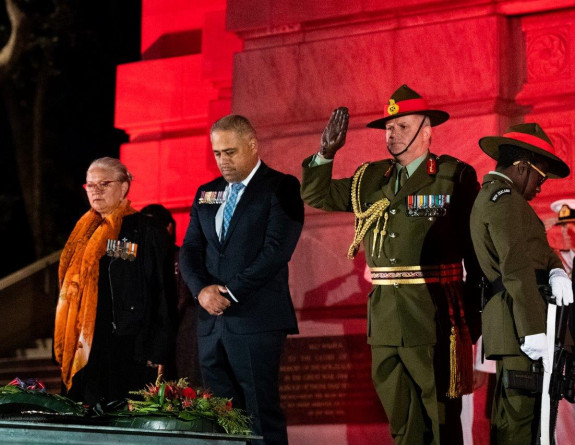
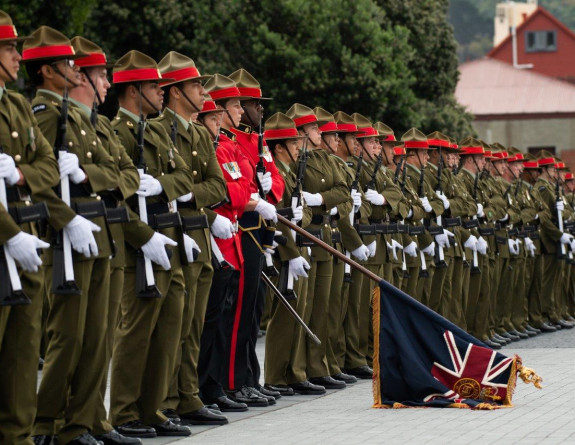
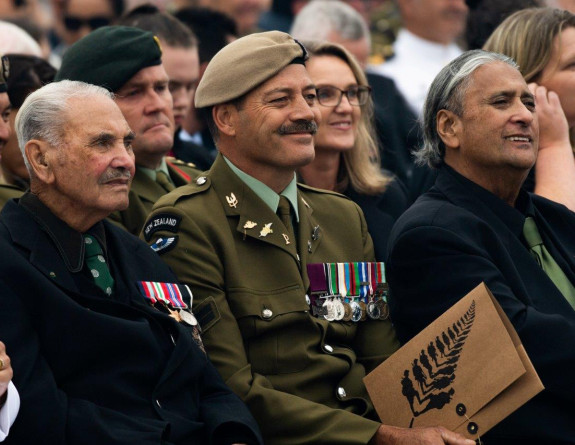
Rhythm in Stewart Island/Rakiura
The New Zealand Army Band toured Stewart Island/Rakiura in May, the first time the band have visited the island in its 57-year history.
The band treated the island to a number of musical delights – including an Anzac ceremony and concert for the local school, a charity dinner and dance, and finally a public concert where more than 200 attended.
Major Graham Hickman, Army Band Director of Music said the band had been considering the trip to Stewart Island for several years.
“The logistical challenge is huge. We do not travel light, every concert we do requires a whole truck full of gear.
“Normally our truck goes ahead and then the band will follow, but there was no way to get the truck to the island, so for these performances we cut down the equipment to the most basic set up possible,” said MAJ Hickman.
The band had three metal crates that were transported by sea freighter with their gear, and rehearsed the pack into the crates in Burnham to ensure all the critical gear would fit.
The band took the ferry to the island in the morning, and then all their gear followed in three separate shipments that day.
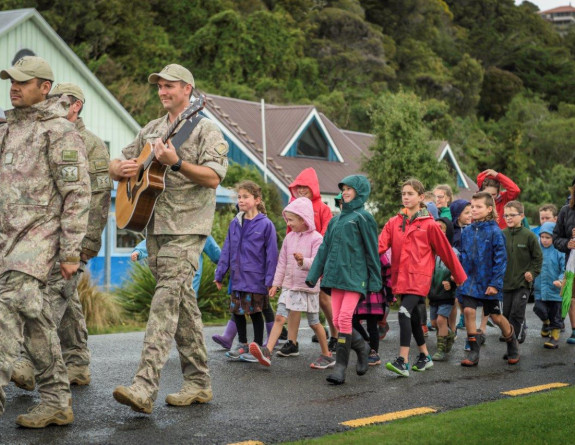
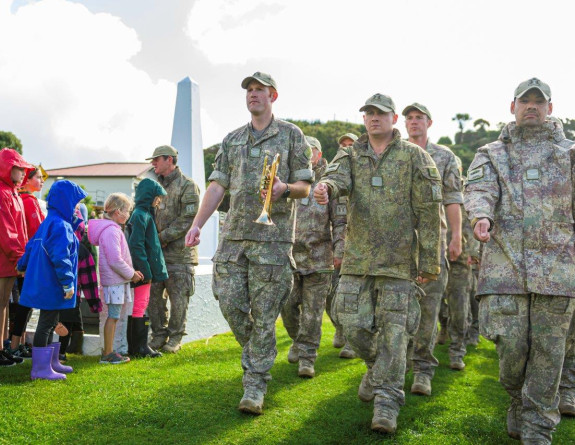
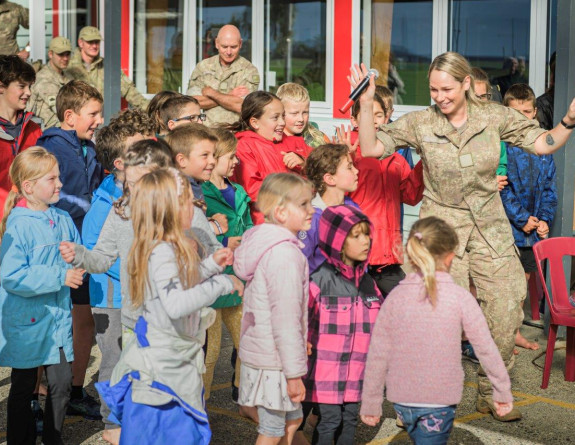
Army support to Canterbury flooding
When the rivers rose and the rain kept pouring down in May soldiers from Burnham Military Camp quickly leapt into action.
Despite the heavy commitment of soldiers to Operation Protect around the country, 3rd Combat Service Support Battalion (3CSSB) was able to stand up a headquarters command and control team when called upon by Canterbury Civil Defence and Emergency Management (CDEM).
A transport team and Emergency Operation Centre (EOC) Liaison Officer with seven vehicles, including Unimogs, HX58s and a LOV Ambulance were deployed to Ashburton within two hours of the call.
As the situation developed, liaison officers and teams were in place with EOC’s in Ashburton, Timaru, Selwyn, Waimakariri and at CDEM in Christchurch as well.
Captain Jake Faber, who was the Liaison Officer in Ashburton, said the team was busy as soon as they got to Ashburton and they worked closely with the EOC controller and other emergency response agencies to establish essential tasks.
“The first tasks for us were evacuations of people who were inaccessible to Fire and Emergency New Zealand (FENZ) and New Zealand Police.”
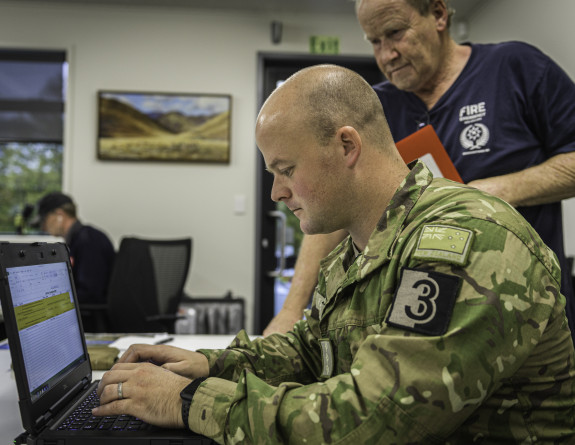
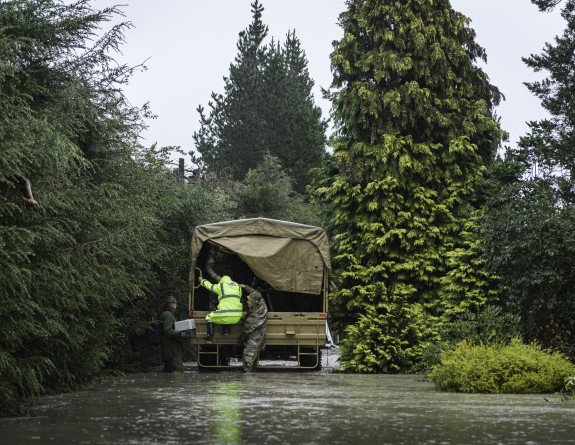
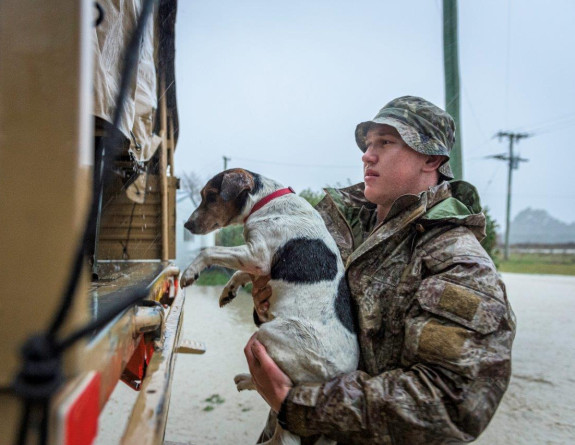
Weapons demonstration
The Waiouru Military Training Area came alive with the sound of heavy-duty armaments when the Army held a weapons effect demonstration in June.
The two-day display came at the end of 16 Field Regiment and the School of Artillery’s Exercise Brimstone.
The first day was devoted to showing Ministry of Defence and Capability Branch personnel around Waiouru, and introducing them to the various TRADOC schools.
The field demonstrations of the following day included the firing of the Javelin MRAAW missile, as well as the L119 105mm light gun, the L16A2 81mm mortar, and the anti-materiel rifle. The Light Armoured Vehicles’ M242 25mm cannon was also fired.
This activity was an important opportunity to demonstrate how the Army delivers combined arms effects on a battlefield. The audience for the demonstration included many Defence civilian staff; providing important insights into how the Army operationalises capability to meet the policy requirements of being combat-capable. The demonstration also gave soldiers the opportunity to practise some of their skills in a combined arms environment.
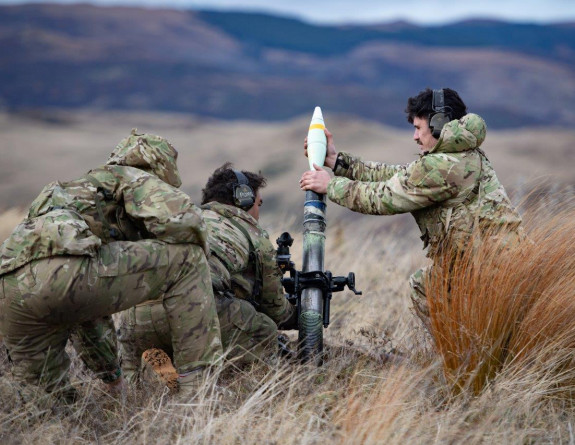
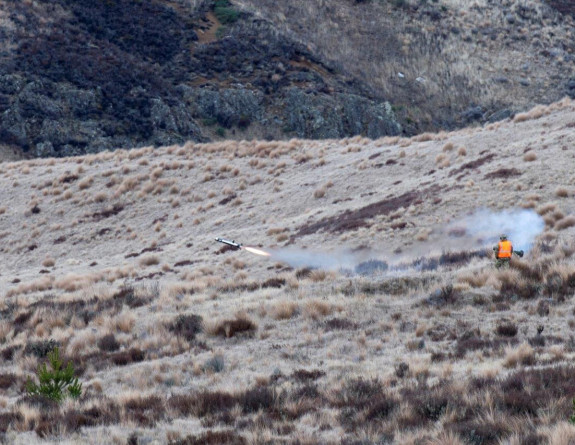
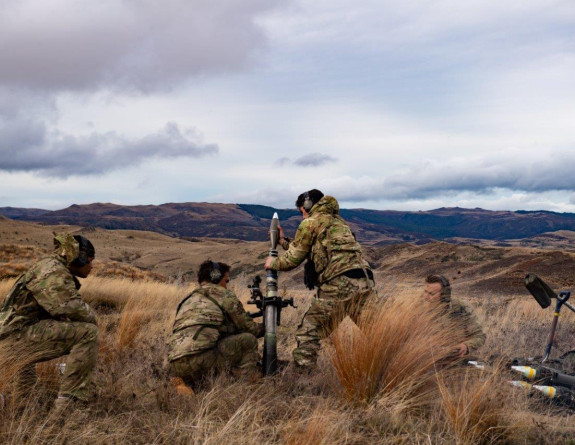
West Coast flooding
Soldiers from 3rd Combat Service Support Battalion (3CSSB), based at Burnham Military Camp deployed to the Buller District on the West Coast in July following severe flooding.
The few remaining soldiers in the unit who weren’t currently committed to Operation Protect braved the treacherous driving conditions on the way to the worst-hit area of Westport. Only six weeks earlier the unit also responded to the Ashburton floods in mid-Canterbury.
Soldiers assisted Buller Emergency Management alongside Fire and Emergency New Zealand, New Zealand Police, New Zealand Emergency Management Assistance Team, Land Search & Rescue New Zealand, Urban Search & Rescue, as well as Community Coordinators with the evacuation of more than 800 properties and 2,000 residents in the area.
In addition to those helping with evacuations, 3CSSB caterers, with the Army’s tactical field kitchen assisted in cooking and feeding up to 300 emergency responders who were supporting the flood response effort.
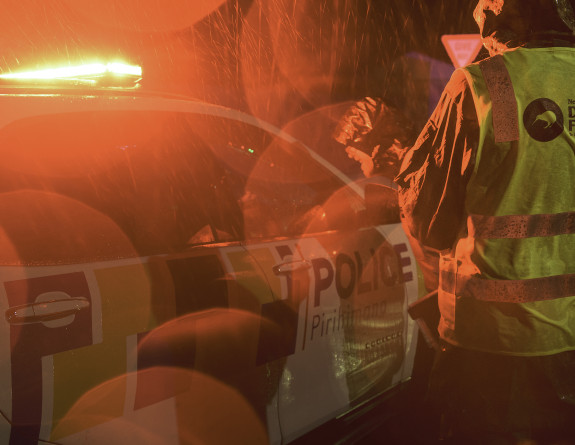
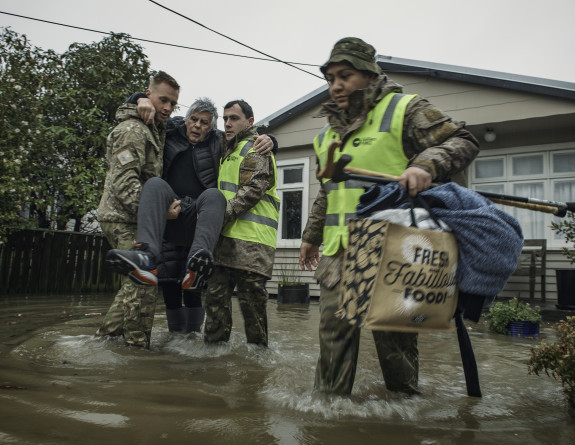
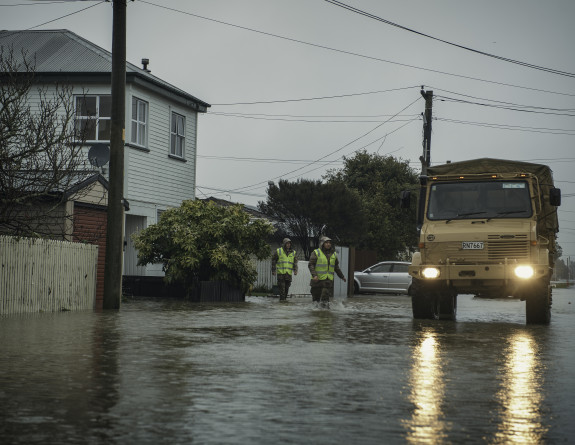
Code words and courage — the Army evacuates Afghanistan
The safe passage of hundreds of evacuees from Afghanistan was made possible by an elite group of New Zealand soldiers who used code words and tactical landmarks to assist their efforts in an attempt to avoid chaotic and dangerous scenes.
Members of the New Zealand Army, deployed as part of the New Zealand Defence Force’s Operation Kōkako, were on the ground at Hamid Karzai International Airport (HKIA) in Kabul to help evacuate New Zealand nationals, their families and visa holders earlier this month.
The turbulent and dangerous environment saw Special Forces troops, including a Female Engagement Team, move deep into the security area designated around HKIA, at times utilising a canal, to reach those they had been sent to help, guiding them through the crowds to points on the perimeter where they could be brought into the airport, secured, and safely evacuated.
A special forces commander on the ground said the evacuees would be given code words for them to show in order for them to be positively identified.
“Once identified we would begin the work of extracting them, often during a lull where it was tactically acceptable. We were very deliberate in this approach lest we started a riot or caused a breach.”
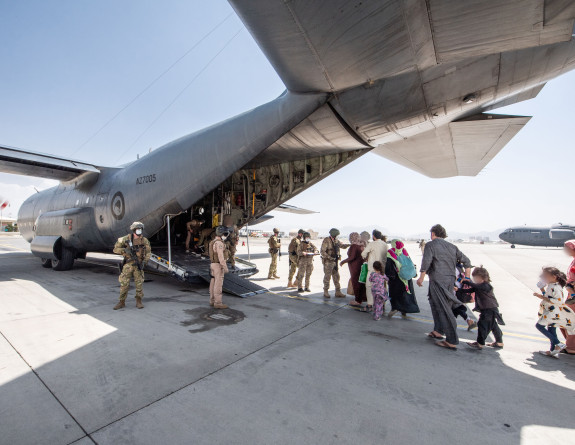
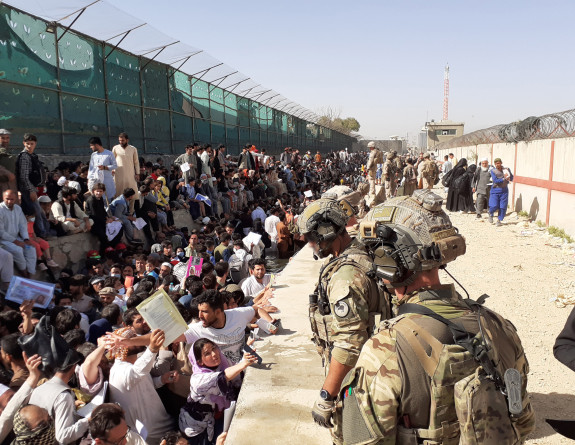
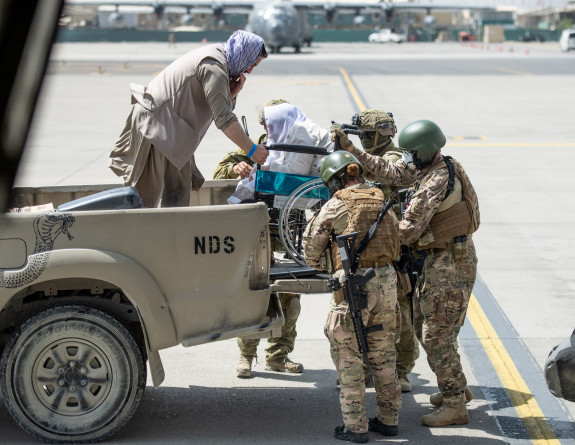
Bushmaster production gets underway
Production got underway in October of the first of the New Zealand Army’s Bushmaster NZ 5.5 vehicles by Thales Australia in Bendigo, Victoria.
The Bushmaster vehicles will provide Army personnel with high levels of blast and ballistic protection. They are designed with a V hull, which redirects blasts out from under the vehicle, saving lives.
The Ministry of Defence is responsible for advising the government on defence policy and the acquisition of major defence equipment, such as the Bushmaster vehicle fleet.
Project teams are made up of experts of both Ministry of Defence staff and New Zealand Defence Force (NZDF) personnel, but the Ministry has particular responsibility for the selection of suppliers, contract negotiations and project management. NZDF personnel are responsible for the introduction into service, in-service and disposal phases, which for some capability is up to 30 years.
Ministry of Defence project team leader Gillian Rodger says a close working relationship, from the start of the process, has proven vital to the success of the project.
“The Bushmasters are scheduled for delivery in late 2022 and will replace New Zealand’s current New Zealand Army Pinzgauer fleet. They are not a combat vehicle but will provide our personnel with greater protection while deployed on operations, and they’re used by many of our partners overseas.”
Training for excellence
A former meat works near Ashburton was the scene of a simulated urban attack in September, when 94 soldiers from 2nd/1st Battalion Royal New Zealand Infantry Regiment’s Depot Company took over the site during a four-day training exercise.
Exercise Urban Warrior was part of Combat Corps Training (CCT), a 15 week course that aims to prepare soldiers to operate as effective members of a rifle section. Fresh from recruit training, and away from camp, the soldiers develop new skills, while also experiencing and practising operations in an unfamiliar and complex setting.
Officer Commanding Depot Company, Major Matthew Blake said urban environments are one of the most difficult to operate in.
“Urban terrain demands adaptability, initiative and problem solving, not only at the individual soldier level, but at every level of command. Because of this, soldiers are taught both the hard skills required for urban operations, and the mind-set required to win. As no two urban environments are the same, soldiers need to problem solve and search for work in order to adapt, overcome and be successful,” he said.
On day one, two NH90 helicopters and crew from No. 3 Squadron transferred the soldiers from Burnham Military Camp to the site to begin the exercise.
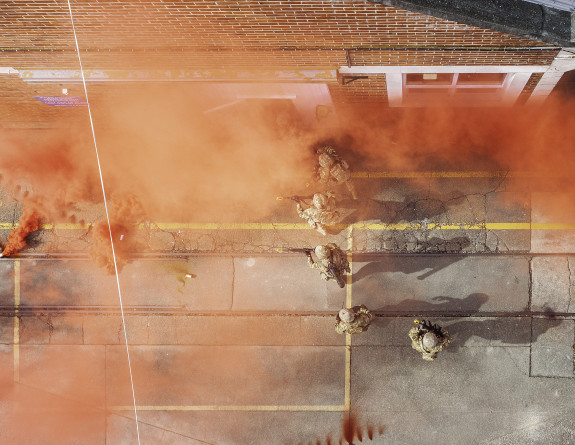
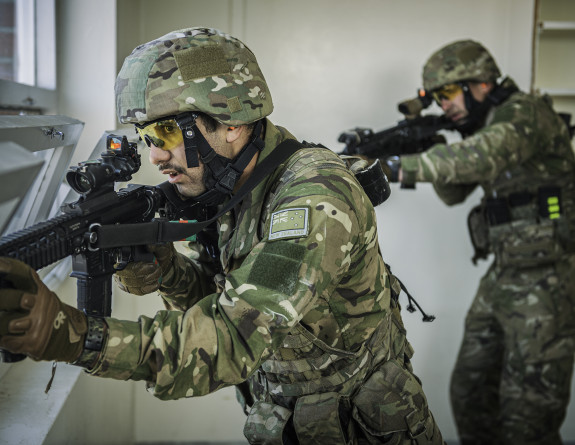
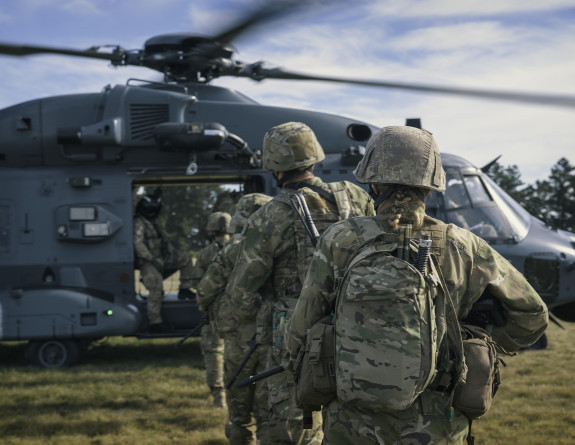
Exercise Foxhound
More than 100 soldiers from 2nd/1st Battalion Royal New Zealand Infantry Regiment competed to come out on top at this year’s Exercise Foxhound.
The four-day exercise was designed to tax both soldiers’ and commanders’ physical and mental abilities. Working in sections of seven to nine personnel, all participants were required to display motivation and solve problems individually and as a group right through this skill-at-arms style exercise. A wide range of infantry capability was tested in urban, close and open environments; from trench clearances by day and night, shooting at close quarters and long-range, to assault stands and navigation circuits.
Sections competed to be in the running for five trophies; Section Match, Falling Plate, Medical, the rock ,and the pre-eminent trophy – the overall Top Section.
Led by the unit training wing, Exercise Foxhound was the largest training exercise for 2nd/1st this year, both in terms of the number of personnel who took part and those behind the scenes who made it happen, including stand controllers, medical and support staff. Taking place simultaneously at Burnham Military Camp, Oxford and West Melton, each section rotated through 22 stands spread across the three sites. Ex Foxhound culminated with the “rock”, an 18km march from West Melton to Burnham, with sections wearing a pack, webbing, weapon and section equipment weighing more than 25kgs, racing to reach the finish line in the fastest time possible.
Commanding Officer, Lieutenant Colonel Cory Neale said Exercise Foxhound was a positive activity as many of the Unit’s soldiers have been deployed repeatedly on Op Protect.
